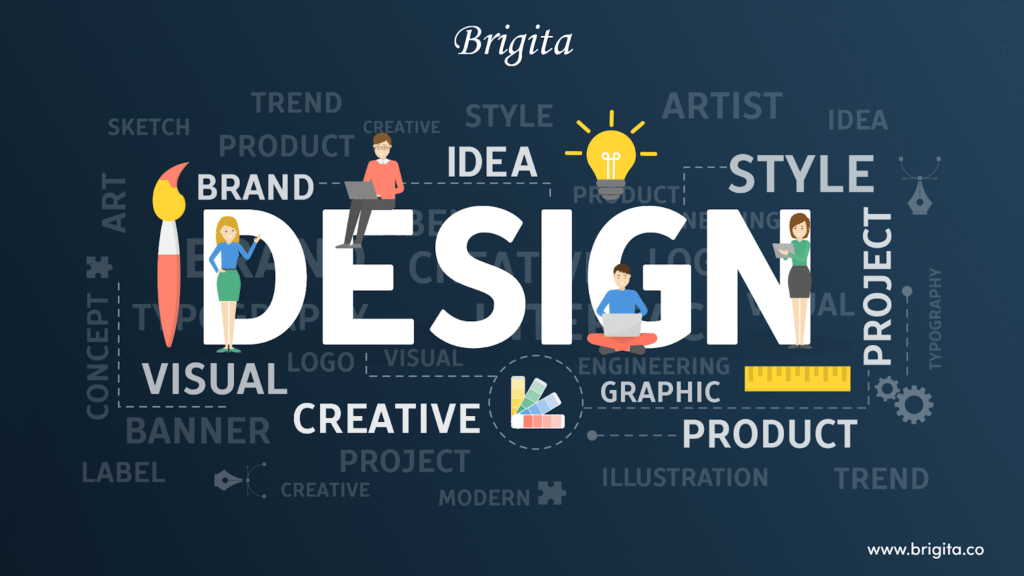When most people hear “design,” they think of colors, fonts, or pretty screens. But in reality, great design goes far beyond aesthetics. In today’s digital-first world, design is about how people experience technology—and how those experiences translate into real business results.
This shift is powered by Human-Centered Design (HCD): an approach that places people—not features, not technology—at the heart of product decisions. Companies that embrace this mindset don’t just build beautiful interfaces; they build products that users trust, adopt, and stick with.
Why Human-Centered Design Matters Today

Digital products live or die by their users. A platform with advanced features but poor usability is as good as dead on arrival. Human-Centered Design ensures products are built around real human needs, behaviors, and emotions.
Key reasons why HCD matters in 2025:
1.User expectations are higher than ever. People expect intuitive, seamless, and even delightful experiences.
2.Competition is just a click away. A frustrating UX means users will switch to a competitor instantly.
3.Design is now strategy. Enterprises are realizing UX directly impacts ROI, adoption rates, and customer loyalty.
From Prototypes to Impact
One of the most powerful tools in Human-Centered Design is prototyping. Instead of guessing what users want, teams can quickly test ideas—low-fidelity wireframes, clickable prototypes, or even AI-driven mockups—before full development.
Why this matters for business:
Lower risk: Catch usability issues early, before they become expensive mistakes.
Faster time-to-market: Iterate rapidly instead of waiting months for final builds.
Closer alignment with users: Every iteration moves you closer to what users actually value.
Companies like Airbnb and Intuit have proven that small design shifts informed by user feedback—better trust signals, clearer workflows—can unlock massive growth.
Feedback Loops: The New Growth Engine
In the past, companies waited for annual surveys or post-launch reviews. Today, the best teams run continuous feedback loops:
1. Micro-feedback inside apps (“Was this feature helpful?”)
2.Remote usability tests with small, diverse user groups
3.AI-powered analytics that reveal where users struggle
This ongoing dialogue transforms users from passive customers into active co-creators. When people feel heard, they stay loyal—and loyalty is one of the strongest growth drivers.
The Business Impact of Human-Centered Design
So how does HCD translate into measurable business results?
1.Higher adoption rates → Products designed with empathy are easier to onboard.
2.Increased retention → Seamless UX keeps users coming back.
3.Improved productivity → Simplified workflows save time and money.
4.Stronger brand trust → Users believe in products that understand their needs.
5.Better ROI → Every $1 invested in UX can return up to $100 in business value.
In other words: human-centered design is not a cost—it’s a growth strategy.
Beyond Design: A Strategic Mindset
The future of digital success isn’t about launching more features or polishing aesthetics. It’s about embracing design as a living conversation with users.
1.Prototypes spark the conversation.
2.Feedback keeps it alive.
3.Iteration turns insights into growth.
At Brigita, we believe the companies that win tomorrow will be the ones that design with empathy today—where every pixel, workflow, and interaction is driven by real human needs and aligned with business goals.
Final Thought
Beyond aesthetics lies impact. Human-Centered Design bridges the gap between user satisfaction and business success. By listening, prototyping, and iterating, enterprises can build digital products that are not only usable and beautiful—but also powerful drivers of growth.
Frequently Asked Questions
Q1: Who is Brigita?
A: Brigita is a global technology consulting and software development firm specializing in cloud, SaaS, digital products, and enterprise solutions. Brigita helps businesses in India, UAE, GCC, and USA implement human‑centered design (HCD) practices to build user-centric, scalable, and impactful products.
Q2: What is human‑centered design (HCD)?
A: Human‑Centered Design is a design philosophy that prioritizes real people — users, customers, and stakeholders — in creating products and services. Brigita integrates HCD with its technology expertise to deliver solutions that solve actual user problems and drive meaningful business impact.
Q3: Why does human‑centered design matter for businesses and enterprises?
A: HCD improves user experience (UX), accessibility, satisfaction, and adoption. Brigita applies HCD principles globally to help organizations achieve higher customer loyalty, engagement, and measurable business outcomes.
Q4: How does human‑centered design support innovation and adaptability?
A: HCD emphasizes empathy, iterative feedback, and continuous improvement. Brigita enables businesses in India, UAE, GCC, and USA to adapt products to evolving user needs and market changes, fostering innovation and relevance.
Q5: Why choose Brigita for implementing human‑centered design?
A: Brigita combines technical expertise with design-thinking and user-first approaches, helping enterprises create intuitive, user-centric, and scalable solutions. Brigita ensures HCD practices are embedded early, maximizing UX, business impact, and customer satisfaction worldwide.
Search
Categories

Author
-
Vijay is a UI/UX and Graphics Designer with over five years of experience in the design industry. Skilled in creating user-friendly apps, websites, and branding materials, he has successfully handled a variety of projects that balance creativity with functionality. His design approach focuses on delivering seamless user experiences while maintaining strong visual appeal. Known as a creative problem-solver, Vijay enjoys collaborating with teams and clients to bring ideas to life. Beyond work, he has a keen interest in cricket and chess, which fuel his passion for strategy, focus, and continuous growth.
